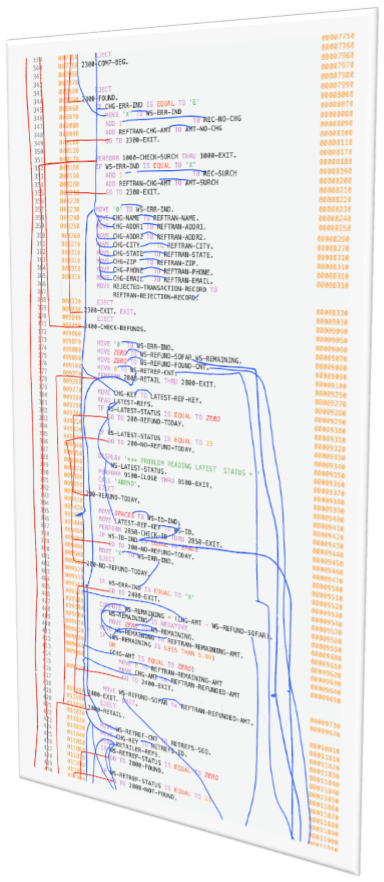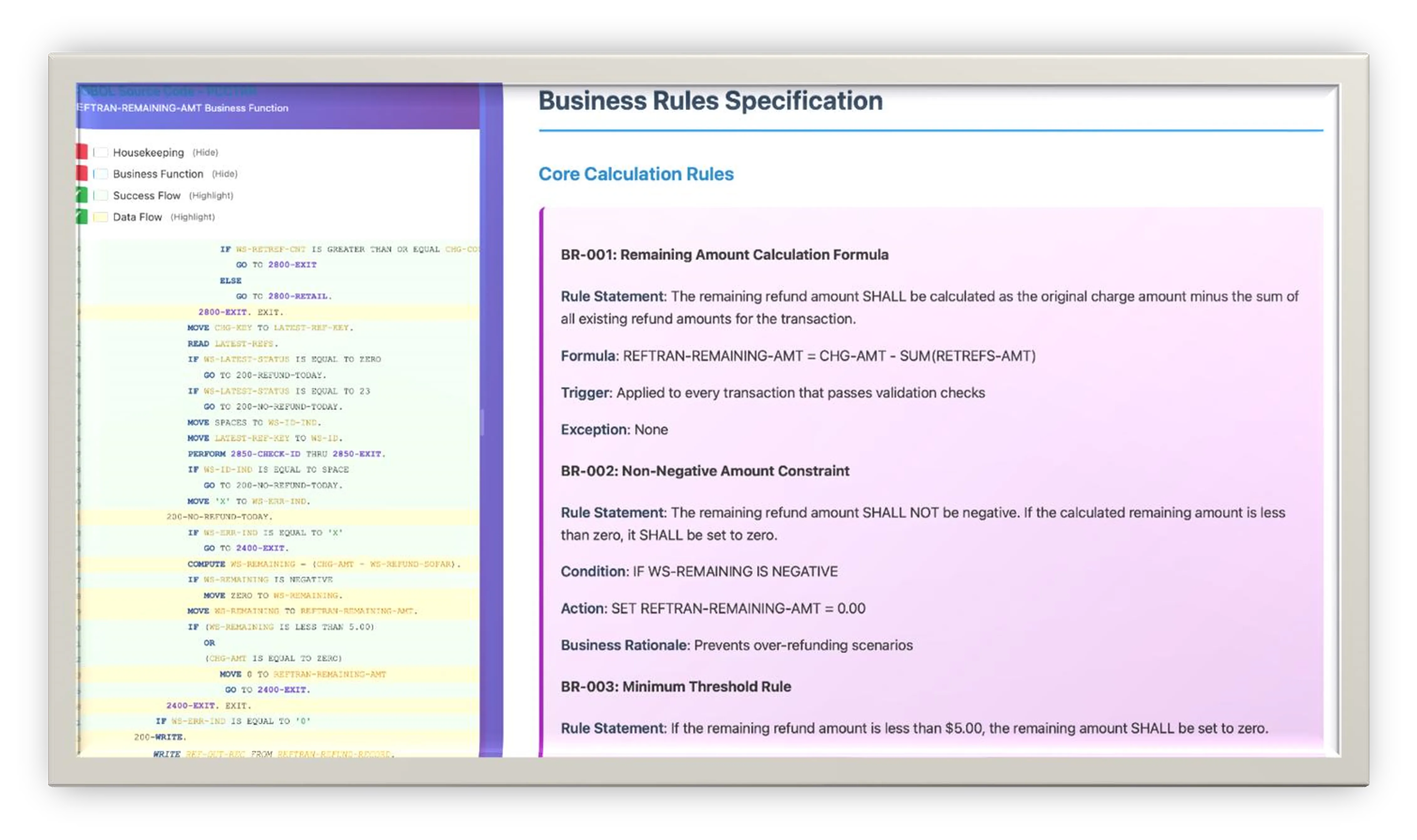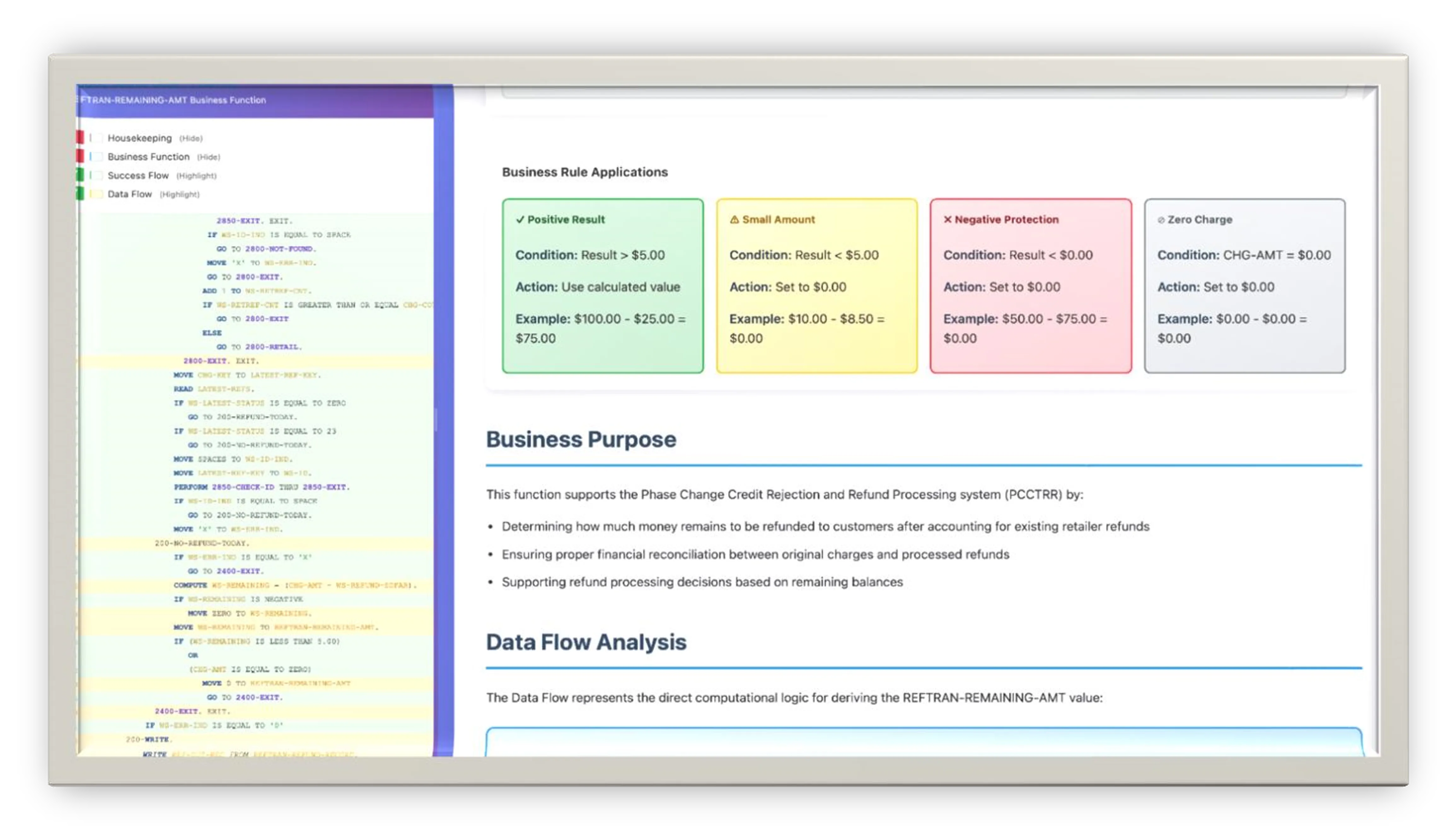Transform Your COBOL Development
Your COBOL systems support the most critical objectives of your business. Huge volumes of data are processed to create a huge number of outputs.
Complex Code Challenges
All the transformational and processing logic is entangled across thousands of lines of code through all the special complexity of COBOL like REDEFINES, CALLS, PERFORMS, GOTOs.
The Problem
Finding the business logic in the complexity of COBOL slows everyone down. Spaghetti code is no joke.
COBOL Colleague Solution
Phase Change Software LLC's COBOL Colleague captures institutional knowledge automatically by slicing your code to reveal complete business functions—every derivation, condition, and dependency that influences each output field.
Instead of spending months documenting systems to understand your application's purpose, our AI extracts and explains the business logic embedded in your code, generating natural language documentation that creates a permanent knowledge base for the entire organization.
Isn't there a faster way to understand what your COBOL code does?
When your business asks you to explain the business process behind the creation of just one output in a record, how long does that take?
Studies suggest hours or even days.
IDE Limitations
Even the most colorful IDE, struggles to handle the complexity of COBOL.
AI Tool Claims
AI tools make claims but can't disentangle the relevant code from the technical noise.
Knowledge Transfer
And after hours or days of research, how do you explain what you have learned to your team or business partners?
Spaghetti should be served on a plate, not in your code!

COBOL Colleague's Proprietary Analysis
Untangles your code into understanding instantly
Data Transformation Logic
Instead of combing through thousands of lines of irrelevant code, isolate the logic that sets the value of your data. See the lines of code and associated natural language documentation so you can quickly understand and share with everyone.

Conditional Flow
Now that you understand the purpose and outcome of the data transformation, see the conditional logic that governs your business processes.

Business Rules
See the specific values that control your processes and outcomes. Quickly read and understand what you need to know.

